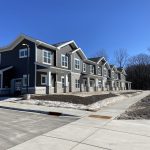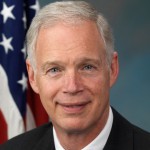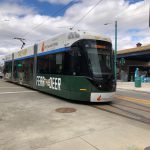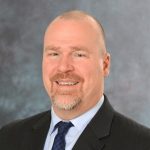School Reopening Plans Get Failing Grades
State teachers union analysis gives 'F' to Oak Creek, Cudahy, Franklin, Greendale, may scare away teachers.
“F” is the grade given to the Oak Creek – Franklin school district for their plans to reopen school this fall. This district received the worst grade given by Region 7 of the Wisconsin Education Association Council (WEAC) which represents educators in southeastern Wisconsin.
Other school systems receiving a failing grade were Cudahy, Franklin, Greendale, Kettle Moraine and West Bend. Receiving a “C” were Kenosha and St. Francis. A “B” grade was given to Milwaukee, Racine, South Milwaukee and West Allis – West Milwaukee. Other school districts in the region were not graded at this time.
All failing districts are considering opening with students present four or five days a week or a hybrid of online and in-person instruction. Both Kenosha and St. Francis are starting virtually, but there are questions about how they would bring back students; therefore, they were given a “C”. All the districts given a “B” were opening virtually, but no district matched all of the 14 criteria set up by WEAC 7. The highest rated district was West Allis – West Milwaukee.
The 14 criteria include: coronavirus testing, mask mandates, social distancing, temperature checks and substitute teacher availability among other factors.
The WEAC 7 grading system may turn out to be more than an academic exercise. Other parts of the state may use the system to evaluate their own districts given the fact that no one in either state or federal government has created an evaluation system. Each school system has been pretty much told to use its best judgement. The general public reliance on this evaluation may vary from district to district. But teachers are likely to sit up and take notice given that it is coming from a teachers union, and they may put considerable pressure on their districts to improve safety.
In-person failing grade
Oak Creek-Franklin plans to return to full five-day instruction this fall. Parents can opt out and use an alternative, virtual instruction model. The district is not considering offering the online instruction itself, but will contract a third-party vendor for that service.
Class sizes will not be reduced in the Oak Creek-Franklin district, where classrooms average between 18 and 25 students. Teachers are expected to space desks apart as best they can, but the district admits some classrooms will be “challenging.” Classes will not mix with students from other classes, either on the playground or in the cafeteria. Given the number of students, having one student per seat on a school bus is not feasible. The district is counting on students to wear masks.
A survey of Oak Creek-Franklin staff members taken about the same time showed that 3.4% of the teachers were unable or unwilling to work on the basis of in-person instruction, while 96.6% were willing to be in school. Teachers were told that they had to decide if they wished to retire no later than July 31 if they did not wish to lose some district retirement benefits. The district has now loosened that deadline and states that it is “working” with teachers considering retirement.
At a recent school board meeting, the superintendent stated that plans for opening school may have to be revised; this is not the final word for the fall.
Other options
School districts that appear to be set on in-person learning are giving families the option to take classes online. Teachers who have misgivings about going back into the classroom can hold out hope they will be among those selected to provide education totally online. Most school districts are still working out the details. In the case of Oak Creek – Franklin, online instruction may not be an option for teachers if the district goes with a third-party vendor.
Hybrid models are being proposed by a number of school districts in Wisconsin. One such district farther away from the metro Milwaukee area is Oconomowoc which is in WEAC’s Region 7, but has not received an evaluation from the union.
The district will have a fairly traditional model of in-person classes five days a week for grades kindergarten through fourth grade. Students will stay in what is called a “cohort” and will not mix with other students outside of their classroom.
Oconomowoc will use a hybrid model for middle and high school students, with half the students going into the school at any one time. Half will attend two days at the beginning of the week, the other half at the end of the week. The rest of the time will be online instruction working from home.
But one school board member was concerned. “We, as a broader community, need to step up. Based upon my own anecdotal observations on driving through Oconomowoc on a Friday night and still seeing businesses that don’t require masks, that tells me that we are not at a point where we are going to mitigate the spread.”
One parent was worried that students,who are supposed to be studying online will just get together outside of school and increase the spread. At least, when the students are in school, the school can monitor their behavior.
One school board member pointed out that health officials have suggested that schools should not open in person if a community’s positivity rate for the virus is above 5%. The rate in Oconomowoc has bounced between 5% and 10%.
School board president Rick Grothaus had a grim assessment. “When this comes to our schools, I believe we cannot prevent this under any circumstance. What we can do is limit that disease as much as possible and sustain the ongoing teaching of our kids.”
The superintendent understood the impact on teachers if the school couldn’t manage a safe environment: “Our biggest challenge is if we don’t have teachers that can teach. And if we are short subs, we will automatically be in a situation where we will go remotely or we will have to close.”
Schools that are opening virtually have few safety issues, but questions remain about the quality of education provided and the emotional impact on children of long-term isolation. The WEAC 7 evaluation only considered the risk of COVID-19 infection at this time.
Small town Wisconsin
Oconto Falls is a rural school district of just under 1,700 students and 120 educators, 30 miles north of Green Bay.
“We struggle just to get full-time teachers,” says middle school teacher and union representative Valerie Nickels. Getting substitute teachers can be a bigger challenge. This district relies on retired community members who have college degrees with no teaching credentials to fill in for absent teachers.
The district administration proposed a hybrid opening, having half the students coming Monday/Tuesday, the other half on Thursday/Friday. On the other days, students would be online or use materials previously downloaded onto their computers.
Nickels recalls a parent survey showed that 80% of the parents wanted face-to-face instruction somehow; only 10% of the parents said they would support only virtual instruction. About 85% of the staff said they would come back no matter what, while 15% said they had great reservations about returning, but no one said they would outright retire or quit, says Nickels. These surveys were conducted in late June/early July. Since then, two teachers have retired listing COVID-19 as a deciding factor.
Just how effective a deep cleaning will be after two days with dozens of students touching each desk and hundreds contacting door jams and other objects is questionable. We now know that the virus is primarily transmitted by breathing in droplets that hang in the air. Oconto Falls school board president Ron Leja says that Wednesdays will also be used to help prepare teachers if the system must transition to virtual instruction.
Sometimes no substitute teachers are available or the school must wait until someone can come in. Classes have to double up. That means a classroom could be packed with 40 or 50 students on a temporary basis. Perhaps sensing that the virus may hit its schools, the district will be hiring four full-time subs who can fill in at a moment’s notice.
Nickels is afraid that the community is ill-prepared. She has seen postings on social media with parents stating that they would defy the district’s mandate on wearing face masks. “If we send our children to school without face masks, what is the school going to do? Send them home? No, the school is going to take them.” If that happens, will teachers stay? wonders Nickels.
If some people believe teachers should rush back into schools in the same way that police officers rush to a crime scene or firefighters run into a burning building. Teachers counter that they are not only thinking of themselves but their loved ones as they contemplate returning to workspaces filled with students who, even if they don’t get ill themselves, are likely to transmit the virus. Some are hoping that they can put pressure on schools to go virtual and save lives.
Come September, if educators don’t go in, there will be no school.
Reprinted with permission of Wisconsin Examiner.
More about the Coronavirus Pandemic
- Governors Tony Evers, JB Pritzker, Tim Walz, and Gretchen Whitmer Issue a Joint Statement Concerning Reports that Donald Trump Gave Russian Dictator Putin American COVID-19 Supplies - Gov. Tony Evers - Oct 11th, 2024
- MHD Release: Milwaukee Health Department Launches COVID-19 Wastewater Testing Dashboard - City of Milwaukee Health Department - Jan 23rd, 2024
- Milwaukee County Announces New Policies Related to COVID-19 Pandemic - David Crowley - May 9th, 2023
- DHS Details End of Emergency COVID-19 Response - Wisconsin Department of Health Services - Apr 26th, 2023
- Milwaukee Health Department Announces Upcoming Changes to COVID-19 Services - City of Milwaukee Health Department - Mar 17th, 2023
- Fitzgerald Applauds Passage of COVID-19 Origin Act - U.S. Rep. Scott Fitzgerald - Mar 10th, 2023
- DHS Expands Free COVID-19 Testing Program - Wisconsin Department of Health Services - Feb 10th, 2023
- MKE County: COVID-19 Hospitalizations Rising - Graham Kilmer - Jan 16th, 2023
- Not Enough Getting Bivalent Booster Shots, State Health Officials Warn - Gaby Vinick - Dec 26th, 2022
- Nearly All Wisconsinites Age 6 Months and Older Now Eligible for Updated COVID-19 Vaccine - Wisconsin Department of Health Services - Dec 15th, 2022
Read more about Coronavirus Pandemic here






















